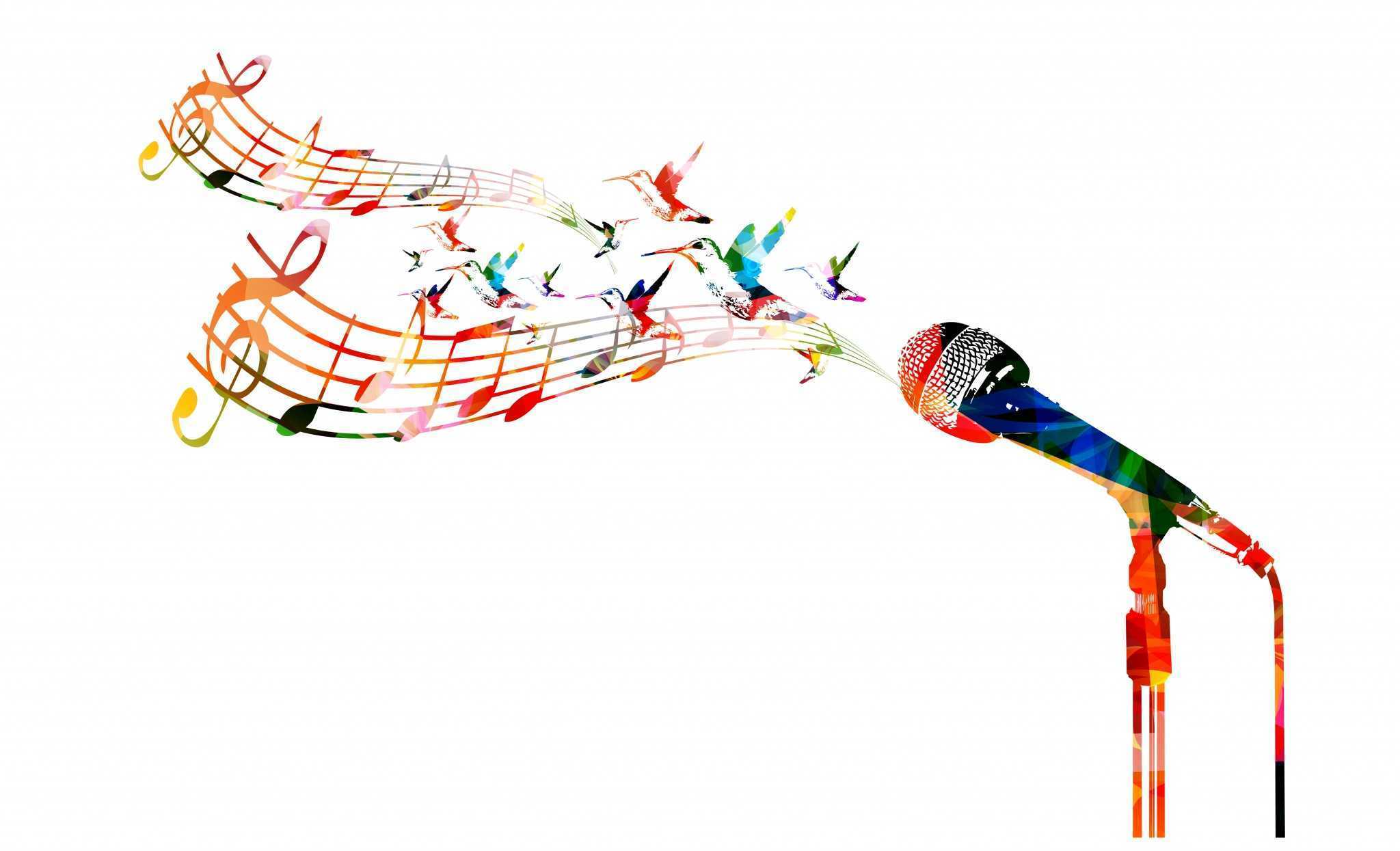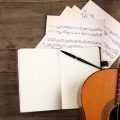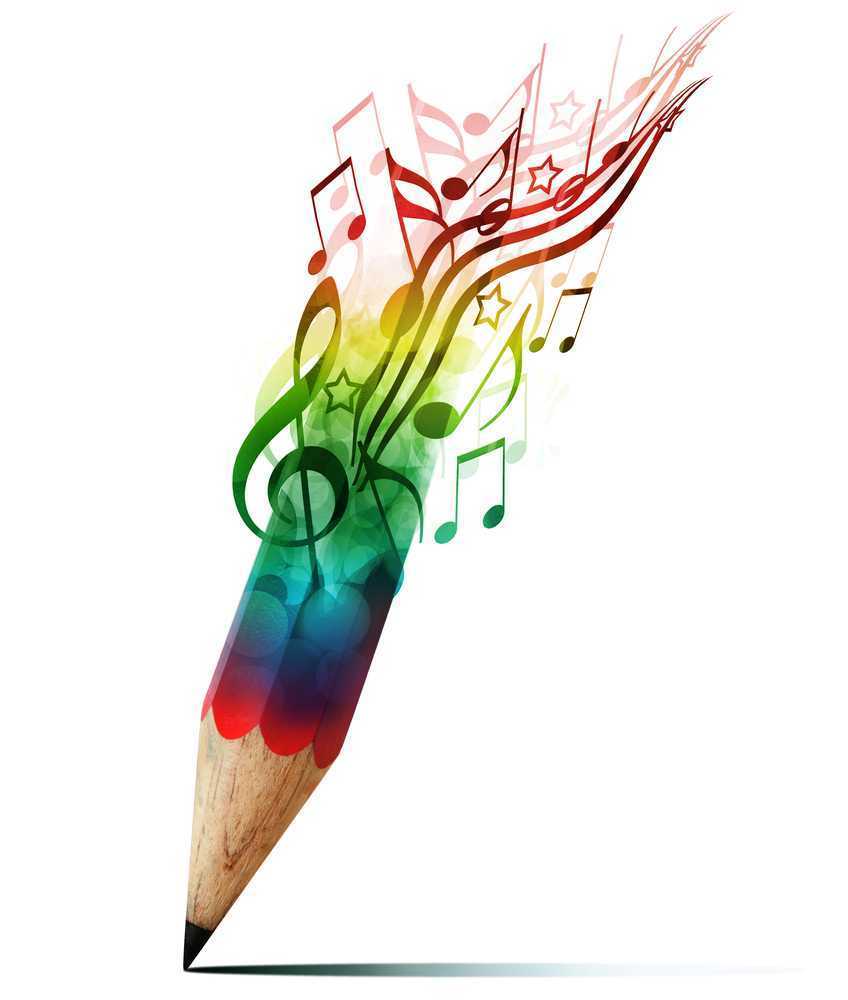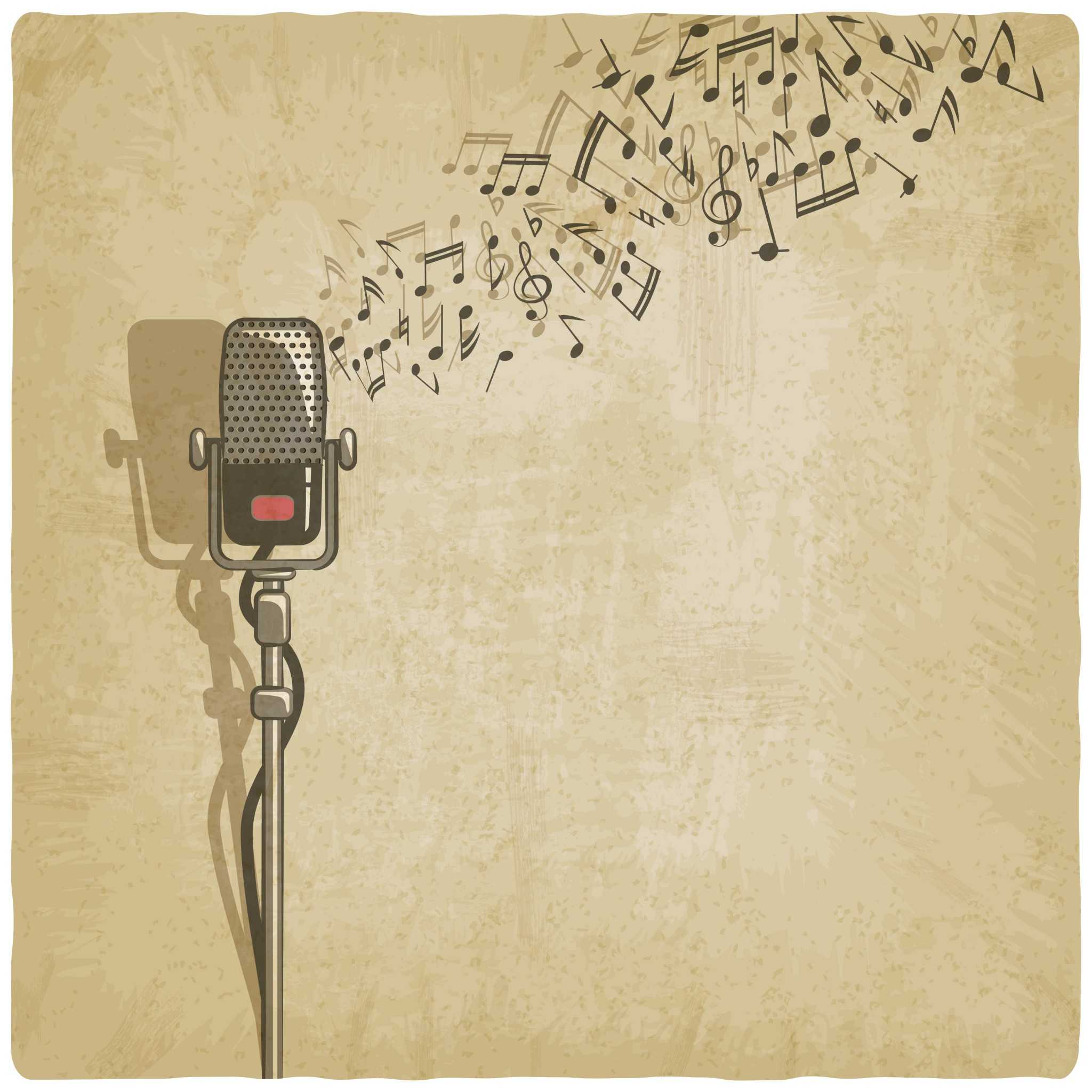To non-musicians, the act of writing songs sometimes can seem as challenging and foreign as designing an aircraft meant to fly through space. Songs are incredibly important to most people around the world, but an artist’s songwriting process isn’t always talked about because it changes so much from person to person. In this article we’re going to talk about what the songwriting process looks like and we’ll give you a few tips on writing your own music.
What’s In a Song?
In 2017, the lines between popular music and other forms of music are somewhat blurred. Captivating song forms, harmonies, and complex rhythms have wormed their way into popular music, and we largely have the influence of jazz to thank for that. At risk of oversimplifying the topic, we’ll simply refer to the songs heard in popular music as any music with a basic verse-chorus form that you might hear on the radio. Songwriters in 2017 continue to expand the boundaries of their art form into new, challenging territories, but they still largely follow conventional rules as far as form, rhythm, and harmony goes.
Radiohead’s 2016 song “Daydreaming” is an example of a song that blurs the line between popular music and art music due to its sophisticated approach to form, melody, and rhythm.
Form
 A song’s form has a huge impact on how it will sound because it dictates how and what musical ideas are presented. Popular songs almost always feature verses that grow into larger, more expansive choruses, but there are plenty of options for adding other sections like intros, interludes, bridges, tags, and endings. Intros are great devices for introducing instrumentation, melodies, and the general tone of a song. In many cases, the intro of a song will feature the same chord structure as the song’s verse or chorus, but that doesn’t always have to be the case. Intros can be standalone sections of music with completely separate content than the rest of the song.
A song’s form has a huge impact on how it will sound because it dictates how and what musical ideas are presented. Popular songs almost always feature verses that grow into larger, more expansive choruses, but there are plenty of options for adding other sections like intros, interludes, bridges, tags, and endings. Intros are great devices for introducing instrumentation, melodies, and the general tone of a song. In many cases, the intro of a song will feature the same chord structure as the song’s verse or chorus, but that doesn’t always have to be the case. Intros can be standalone sections of music with completely separate content than the rest of the song.
Bridges and endings are sections added to songs that help develop the story and give the music a new place to go. These are great devices to help move your song into new, interesting places, but not every song needs to have a bridge or ending.
Harmonic (Chord) Structure
Many musicians begin their songwriting process by stringing a few simple chords together. A song’s chord progression, or harmonic structure, is the unseen foundation holding up and defining what it will ultimately sound like. Think of it this way: If a song is a house, the chord structure is the basement underneath everything else like melody, rhythm, and production. The chord progressions found in songs in popular music range from simple songs with two or three chords down to songs with complex chord progressions that feature more than a dozen different types of chords.
Melody
When most people think of a song, they first recall the melody. If a song is a house, the melody is the part of the house we instantly recognize: the shape and structure, windows, color of paint, etc. In popular music, lyricists nearly always sing the main melody, but that’s not always the case. A song’s melody has the job of telling a story, conveying a mood and giving the listener something to relate to and remember. We’ll tell you more about how to write melodies in just a bit.
The popular band Explosions In The Sky uses three guitar players to switch off playing the lead melody instead of using a vocalist. Their songs are typically much longer than conventional songs, and they approach form in their songwriting in a unique way:
Rhythm
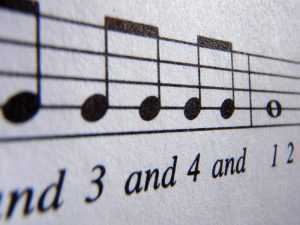
Most of the time, a song’s rhythmic elements will be dictated by the rhythm and feel of the underlying chord structure, but that’s not always the case. Some songwriters compose percussion parts before filling in anything else. Rhythm parts are meant to drive a song forward and to inject physicality into a piece of music. We hear melodies, but we feel percussion. Not all songs need percussive instrumentation.
What Does a Songwriting Process Look Like?
Like songs themselves, no two processes for writing songs are ever alike. As we mentioned before, many songwriters begin the process by stringing together a few simple chords together. Others prefer to write lyrics first and then fill out the song’s instrumentation later. Ultimately, it doesn’t matter what you do to write as long as you do something. Scribble down some lyrics. Create a chord progression and hum over it. Come up with a beat using a drum machine or software on a computer. Taking any steps to create music freely and without constriction is helpful for creating a songwriting practice.
Songwriting Hang-ups
 There’s a million ways to go about writing songs, but many would-be songwriters sit out because songwriting requires vulnerability in a person. Writing lyrics about how you see the world or how you feel about yourself is a scary prospect for a lot of people, including musicians. Creating a piece of music out of nothing can be equally intimidating, so lots of musicians choose to play other people’s songs instead of writing their own. It’s important to face these insecurities head on for the sake of your unique songwriting process. It’s not easy, but you should actively work to remove doubt and judgement from your process so that you’re able to create music freely.
There’s a million ways to go about writing songs, but many would-be songwriters sit out because songwriting requires vulnerability in a person. Writing lyrics about how you see the world or how you feel about yourself is a scary prospect for a lot of people, including musicians. Creating a piece of music out of nothing can be equally intimidating, so lots of musicians choose to play other people’s songs instead of writing their own. It’s important to face these insecurities head on for the sake of your unique songwriting process. It’s not easy, but you should actively work to remove doubt and judgement from your process so that you’re able to create music freely.
If you’ve never written a song before and want to know how to get started, part of the work you’ll need to do is to actively remember be kind to yourself, rein in expectations, and to set and adhere to songwriting goals.
Set Songwriting Goals
Non-musicians are often surprised to hear that songwriting takes a lot of work. Like any other pursuit, songwriting is a skill that only improves with focused practice and effort. If you’re just starting out and need a push, write out a monthly list of songwriting goals to help you stay on track. Here’s an example:
Week 1: Write verse melody and chord progression
Week 2: Write chorus melody and chord progression
Week 3: Write verse and chorus lyrics
Week 4: Fill in other sections and record demo
To help keep yourself on the right track, create your own songwriting schedule. It’s important here to be realistic about your goals and what you expect to accomplish within the span of a month. Some people need rigid schedules to help them through the process of writing songs, while others might feel creatively limited or pressured by sticking to a schedule.
Getting Started
Like we mentioned before, every musician will approach the early stages of their songwriting process differently. We recommend sitting down with a pen and paper, your instrument, and a device to record yourself with. Recording your writing sessions is a smart idea because it will help document good spontaneous ideas that you’re likely to forget the second you walk away from your instrument. If you prefer to write lyrics first and compose music later, there’s nothing wrong with that method.

Good songs happen when we make the time and space to make them happen. If you devote time to explore your instrument, voice, and lyricism, you’ll be able to write a song. This doesn’t mean the song is going to make you famous and be heard by millions of people. If you’re new to writing songs, it’s important to walk the thin line between wanting to make something great and realizing that when you’re new at something you have to put in lots of time and energy to become truly good at it. Your overarching goal in the beginning should be to create a song and to record it so you can listen back and make improvements. Hopefully, after this first song is out of the way, you can learn from your first experience and go on to create other songs. This is where the real work begins.
Whether you begin your songwriting process with lyrics in mind or not, you’ll need to sit down with your instrument to come up with chord progressions. This won’t really be possible if you play an instrument like the saxophone or clarinet, so we recommend getting familiar with instruments like the piano or guitar. By “familiar,” we mean that you should know how to play basic chords on these instruments. If you don’t have access to a piano or guitar, consider using songwriting software on your computer. Apple computers now come stocked with a program called Garage Band, and this program makes building chords and rhythms easy.
The Melody
Once you’ve created a chord progression or two that you like, begin to think about the melody you’d like to create for your song. With a recording device nearby, play a chord progression you’ve come up with over and over again and begin humming a melody over it. This part can be tricky for some people, but if you take your time and give yourself the freedom to be creative without judgement, you’ll begin to hear the contour, phrasing, and rhythm of a melody emerge. Many artists sing gibberish over chord progressions as a way to help them come up with the melody and lyrics for a song at the same time. If you feel comfortable enough to try that approach, then we say go for it. Once you have the verse melody, move on to playing the chorus chord progression and construct melodies for those sections as well.
Arranging Sections and Production

Once you’ve built your song’s chord progressions and melodies, take some time to consider adding sections like an intro, bridge, or ending. If you’re far enough along with your song to the point of having chords, melody, and sections nailed down, it’s time to consider adding other elements into the mix. This is where music software programs like Garage Band come in handy. You can choose to simply keep your song as a demo, or to develop it into a fully produced song with added instrumentation and sound effects. If you’re simply working with a piano and a recording device, this might not be possible, but if you’ve got access to recording software on your computer, then there are limitless possibilities for how you can produce your song.
The Recording Process
Some musicians live for the moment they get to record the songs they’ve worked so hard to write, but others detest the process because recording can be a process filled with pressure, hard work, and repetition. Just 15 years ago, if you wanted to record music, you’d have to pay a premium price at a studio, but in 2017, recording high-quality music yourself has never been easier and cheaper due to recent advancements in home studio technology. If you’re completely new to songwriting, recording your first demo on your phone or a simple recording device is a good way to go rather than spending lots of money on building up a home studio. Wait until you have at least five solid songs written until you do that.
Finding Inspiration For Songwriting
In 2017, there’s plenty of inspiration for writing songs. The songwriting process shouldn’t just be about making music, but also about asking yourself why you want to make music in the first place. Some songs are written to cope with and understand tragedy, while some are written to satirize politicians and celebrities. Others embrace absurdity and humor. If you’re a thinking, feeling human being, then you have plenty of material to write music about. This doesn’t mean that your music has to be weighed down or limited by your own personal experience. Lots of great songwriters use fictional characters in their music as storytelling devices. Take some time to consider what good music means to you and why you want to try creating some of it yourself.
We could go on and on about how to develop a good songwriting process, but at the end of the day you’ll need to find what works for you. Every songwriter brings unique strengths and weaknesses to the table, as you’ll probably find when you begin to write your own music. For more helpful articles about music, check out the Musika Lessons blog.


